 |
|
|
 |
 |
 |
Breed Profile
--Written By Tiami Coleburg

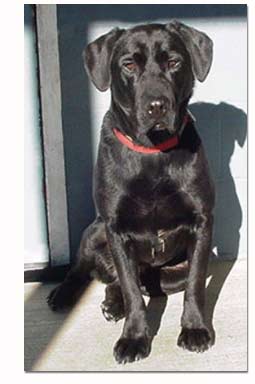 Breed: Breed:
Labrador Retriever
Owner Level:
Suitable for some active and involved first time owners.
Average Life Span:
12-14 years
Average Weight:
Male weights range 65-80 pounds.
Female weights range 55-70 pounds.
Average Weight
Male height ranges from 22 1/2 to 24 1/2 inches high at the shoulder.
Female height ranges from 21 1/2 to 23 1/2 inches at the shoulder.
Color And Coat:
True Labrador Retrievers only come in: black, shades of chocolate, and yellow. The coat should be short, straight and very dense, giving a fairly hard feeling to the hand. They shed moderately during the year and require weekly brushing to keep their coat in good condition. They coat has a natural oil which serves as a water repellent. Excessive bathing can lead to skin problems in this breed. The tail and body should be free from feathering. The tail should have a rounded appearance that has been described as the "otter" tail.
Typical Health Problems:
Labrador Retrievers are generally healthy. The more frequent health problems found in the breed are hip and elbow dysplasia, cataracts, progressive retinal atrophy, and epilepsy.
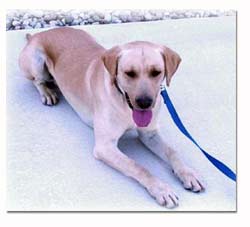 Personality: Personality:
The Labrador Retriever was originally bred to assist hunters with retrieval of water birds, which it still does today. The more modern day jobs this breed has joined in helping man with are: Police drug sniffing dogs, arson detection dogs, agriculture sniffing dogs, seeing eye dogs, assistance dogs, therapy dogs. These dogs learn quickly if they have a consistent, structured environment. The Labrador is a breed that should have formal obedience training due to its active nature. As a family companion dog they can participate with their owners in a wide variety of activities: obedience, agility, fly-ball, tracking and hunting. A well trained and socialized Labrador Retriever can be gentle with children and the elderly.
Labradors are a versatile breed that should adapt quickly to new surroundings if socialized properly. The Labrador should not be an aggressive dog. They do not make good guard dogs. They can function as alert dog, by barking to ward off strangers. A lot of labs though are just happy for the company of any human.
The ideal Labrador Retriever is even-tempered, outgoing, affectionate and friendly. This breed is very people oriented and is happiest when included in the daily household activities. This is an active, energetic breed that requires an active owner. Boredom and loneliness can lead to behavior problems. The Labrador Retriever personality and activity levels vary from dog to dog. Genetics, training, socializing, and the care they receive are a large part of what determines each dogís personality.
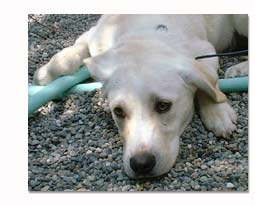 Why are these dogs typically in animal shelters? Why are these dogs typically in animal shelters?
The Labrador Retriever is the most popular dog in America. It is also the most common dog in rescue and shelters. The Labrador breed and irresponsible owners also contribute to the largest number of mixed breed dogs born each year in America. The Labrador and Labrador mixes are the most euthanized dogs in America today.
The majority of Labrador Retrievers in shelters arrive there as strays. Owner turn-ins of Labradors Retrievers to shelters are due to a variety of reasons such as:- Owner's inability to provide for this breed's emotional needs, socializing, and training requirements.
- Improper behaviors, which usually develop out of frustration, lack of proper training, and inadequate exercise. Behavior problems can range from simple, such as house training, excessive activity level, digging, property damage, cat and dog aggression, fence jumping, and excessive barking.
- A new baby in the house resulting in child versus dog conflicts.
- An owner moving and unable to take the dog is a frequent reason.
- Some Labrador Retrievers are given up because of owner allergies. Labradors and some Labrador mixes have a water repelling oil on their coat that some people are allergic too. Make sure no one in your household is allergic to the breedís oils and dander before you adopt or buy one.
- Some Labrador Retrievers arrive at shelters because of owner neglect and abuse.
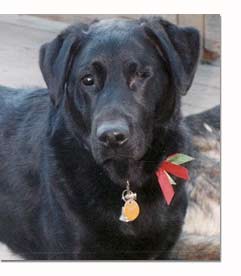 Who should own this breed? Who should own this breed?
A Labrador Retriever owner should be an active and responsible person committed to the care, training and exercise of their dog. Such an owner should be knowledgeable about this active breed type and the needs of the breed they are taking on. The Labrador generally does best with a good fenced yard for their safety and for exercise/playtime. The Labrador does best when included in the every day activities of the household. A lonely Lab can be a barking nightmare. This breed loves to go places, they love to retrieve and they love the water. An owner should be prepared to provide all of the activities a Lab loves on a regular basis.
This breed should be spayed/neutered. In addition to the over population problem of Labradors and Labrador mixes, unneutered males can become male dog aggressive and hard to manage. They are predisposed to some cancers. Unspayed females can become moody/difficult and predisposed to uterine problems and cancers. One of the main keys to successful Labrador ownership is positive obedience training and socialization.
 Is this breed good with children? Is this breed good with children?
Children and dogs should never be left alone and unattended, even for a moment. Young children do not have proper dog etiquette, and dogs do not understand a child's behavior. This can result in tragedy with any breed of dog. Labradors tend to love people and can be especially fond of children. Some of these dogs have a high energy level early in life and can be inappropriate with children if not trained well. Like children, each dog is different in personality, energy and patience levels. So, each dog and child relationship should be considered individually.
Is this breed good with other dogs in general?
Labrador Retrievers generally do well with other dogs if they have been socialized and trained properly. Spaying/neutering is one of the most important keys to having a dog-friendly animal. Pack position is important and will affect and vary each dog's acceptance of other dogs.
How easy is training and house training with this breed?
Labradors are intelligent and generally have a desire to learn. Like humans, each dogís abilities, likes and dislikes will vary. This breed is very toy, phrase, and food motivated which makes them willing subjects. Good training gives Labradors and all dogs the ability to speak the same language with us. This active breed needs training so they can learn to focus. The time required to house train a Labrador varies depending on each dog and on the method used. Positive methods and consistency work best for all training with this breed. Crate training seems to be of great assistance for most dogs in house breaking.
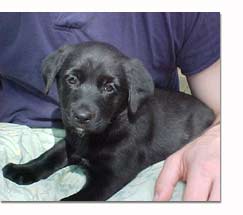 Socializing this breed? Socializing this breed?
Socialization is important with any dog, including the Labrador Retriever. A well-socialized Lab will have the happy, outgoing nature it was bred for. To have a versatile and well-rounded personality, they need to be exposed regularly to a large variety of environments and experiences. They should be given the social skills and taught manners early on. Labradors should exhibit a friendly personality with strangers. They should not be aggressive or shy. A professional trainer and behaviorist should evaluate any Labrador that shows aggression immediately. This breed, if trained and treated well, can be a joyful, loving, canine friend and companion. |
|

